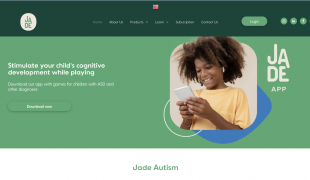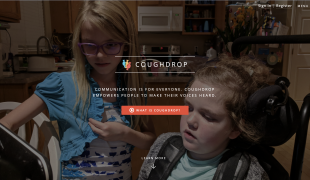- 2319
- 172
- 4
- 4
- 0
- Help Ukraine
Über die Lösung
EZSpeech hat eine App entwickelt, die als interner Simulator in Sprachzentren und Reha-Zentren sowie als Tool zur Betreuung von entfernten Patienten verwendet wird.
Künstliche Intelligenz interpretiert Bewegungen von Gesichtsmuskeln und Tonerzeugung und bewertet die Genauigkeit der Leistung. Echtzeit-Feedback und maßgeschneiderte Anweisungen ermöglichen es dem jungen Benutzer, die gemachten Fehler zu verstehen und zu korrigieren. Masken und Animationen dienen dem Nutzer als native Hilfe und Orientierung.
Jede Übung wird auf einer Skala von 1 bis 100 bewertet, wobei die Gesamtbewertung wie folgt lautet: Super – 90–100 % richtig, Gut – 70–90 % richtig, Netter Versuch – 40–70 % richtig und Zu viele Fehler – unter 40 % richtig . Statistiken und Fortschrittsberichte ermöglichen es der Betreuungsperson und dem Kind, den Gesamtfortschritt des Kindes sowie die Leistung nach Modul und spezifischen Übungen und Praktiken zu überwachen.
EZSpeech bewertet die Korrektheit der Lautaussprache. Die Übungen trennen das Testen auf Laute am Wortanfang, in der Mitte und am Ende.
Die Übungen sind in 8 Module gegliedert, die alle Muskeln des Sprechapparats abdecken:
Bilabial: p, b, m, w, a, u, e, o
Labio-dental: f, v
Interdental: th (stimmlich und stimmlos)
Alveolar: t, d, s, z, n, l, r
Alveolar-palatinal: sh, ch, zh, j
Palatal: j
Velar: k, g, ng
Glottal: h
Angepasst von: https://ezspeech.zyrosite.com/
https://www.youtube.com/watch?v=vlQM4f5--3k
Diese Lösung enthält keinen Hinweis weder auf die Verwendung von Arzneimitteln, Chemikalien oder biologische Stoffe (einschließlich Lebensmitteln) noch auf invasive Geräte, anstößige, kommerzielle oder inhärent gefährliche Inhalte. Diese Lösung wurde nicht medizinisch validiert. Vorsicht! Wenn Sie irgendwelche Zweifel haben, wenden Sie sich bitte an einen Arzt.
DISCLAIMER: This story was written by someone who is not the author of the solution, therefore please be advised that, although it was written with the utmost respect for the innovation and the innovator, there can be some incorrect statements. If you find any errors please contact the patient Innovation team via info@patient-innovation.com
-
-
477
-
0
-
8274

Eine Studentin baut eine App zur Früherkennung von Schlaganfällen
COMMUNICATION: Communicating, whether by speaking, listening, or other means
CAREGIVING
Brain Stroke
Brain Injury (Abscess, Brain Barrier Defect, Brain Contusion, Brain Hemorrhage, Brain Edema)
Stroke
App (Including when connected with wearable)
Chest pain or discomfort
Difficulty coordinating movements
Stiffness or rigidity (difficulty moving)
Paralysis of the legs and lower body
Muscle weakness
Difficulty speaking or understanding speech
Memory loss
Confusion
Fatigue
Dizziness or lightheadedness
Numbness or weakness in the legs
Irregular heartbeat (arrhythmia)
Cold hands or feet
Rapid heartbeat (tachycardia)
Vertigo
Swelling/edema of the legs or ankles.
Shortness of breath
Chest tightness/pressure
Rehabilitating After Stroke
Managing Neurological Disorders
Improving Speech and Communication
To improve Treatment/Therapy
Cardiology
General and Family Medicine
Neurology
United States
-
-
-
146
-
0
-
1594

Ronaldo Cohin, Vater eines autistischen Kindes und Informatikstudent, hat die Jade Autism-App entwickelt.
COMMUNICATION: Communicating, whether by speaking, listening, or other means
Autism
App (Including when connected with wearable)
Enhancing health literacy
Promoting self-management
Managing Neurological Disorders
Building Supportive Community Relationships
Promoting inclusivity and social integration
Enhancing Mental Health
Improving Speech and Communication
To improve Treatment/Therapy
General and Family Medicine
Neurology
Pediatrics
Psychiatry
Brazil
-
-
-
168
-
0
-
2149

Brian Whitmer, ein Softwareentwickler und Vater, hat ein Kommunikationssystem für seine Tochter mit dem Rett-Syndrom entwickelt.
COMMUNICATION: Communicating, whether by speaking, listening, or other means
Neuromuscular Disorders
Videogame
App (Including when connected with wearable)
Enhancing health literacy
Managing Neurological Disorders
Building Supportive Community Relationships
Promoting inclusivity and social integration
To improve Treatment/Therapy
Preventing (Vaccination, Protection, Falls, Research/Mapping)
Raise awareness
Caregiving Support
General and Family Medicine
Internal Medicine
Neurology
Pediatrics
Physical Medicine and Rehabilitation
United States
-
 de
de